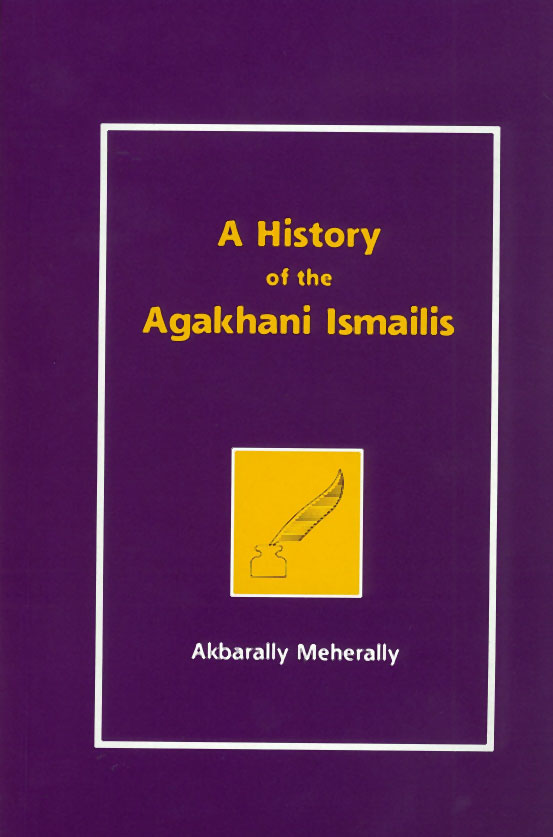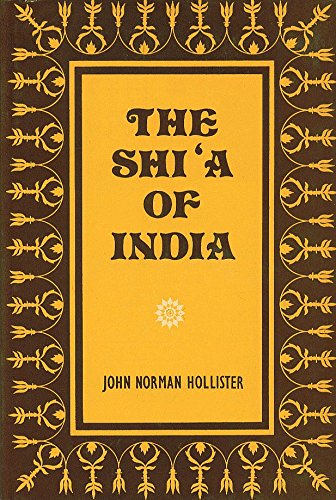Das Avatar of Satpanthi Ismailis and Imam Shahis of Indo-Pakistan by Gulshan Khakee
![]() Ismailis believe that The Last Prophet’s companion, ʿAlī (honored by both Shia and Sunni Muslims) was the 10th incarnation of Hindu Lord Vishnu and the present-day Aga Khan is the present-day ʿAlī (and therefore present-day 10th Avatar). This thesis written by a prominent Ismaili researcher, available for download contains the full translation and transliteration of Das Avatar. The title of the thesis is “The `Das Avatara’ of Satpanthi Ismailis and Imam Shahis of Indo-Pakistan” and was submitted in 1972 to Harvard University by Dr. Gulshan Khakee as her PhD thesis. She was among the pioneers of Ginanic research, and graduated in teacher training in Nairobi where she taught at the Aga Khan Girls School and at the Kenya High School . She did her M.A. at Trinity College in Dublin – Ireland and her PhD at Harvard in 1972.
Ismailis believe that The Last Prophet’s companion, ʿAlī (honored by both Shia and Sunni Muslims) was the 10th incarnation of Hindu Lord Vishnu and the present-day Aga Khan is the present-day ʿAlī (and therefore present-day 10th Avatar). This thesis written by a prominent Ismaili researcher, available for download contains the full translation and transliteration of Das Avatar. The title of the thesis is “The `Das Avatara’ of Satpanthi Ismailis and Imam Shahis of Indo-Pakistan” and was submitted in 1972 to Harvard University by Dr. Gulshan Khakee as her PhD thesis. She was among the pioneers of Ginanic research, and graduated in teacher training in Nairobi where she taught at the Aga Khan Girls School and at the Kenya High School . She did her M.A. at Trinity College in Dublin – Ireland and her PhD at Harvard in 1972.
The ‘big’ Dasamo Avatar of Imam Shah forms the basis of this study, while the ‘small’ Dasa Aatara of Pir Sadr al Din forms Appendix III and that of the ‘Dasa Avatara’ of Pir Shams forms Appendix IV.
Download:
Part 1 | Part 2 | Part 3
The Aga Khan Case by Teena Purohit

The Aga Khan Case focuses on a nineteenth-century court case in Bombay that influenced how religious identity was defined in India and subsequently the British Empire. The case arose when a group of Indians known as the Khojas refused to pay tithes to the Aga Khan, a Persian nobleman and hereditary spiritual leader of the Ismailis. The Khojas abided by both Hindu and Muslim customs and did not identify with a single religion prior to the court’s ruling in 1866, when the judge declared them to be converts to Ismaili Islam beholden to the Aga Khan.
In her analysis of the gināns, the religious texts of the Khojas that formed the basis of the judge’s decision, Purohit reveals that the religious practices they describe are not derivations of a Middle Eastern Islam but manifestations of a local vernacular one.
The Aga Khans by Mihir Bose

This book is based on extensive research in archives ranging from Britain through India, US and Europe. It starts in August 1841 when the British, then rulers of India, were in the middle of one of their wars in Afghanistan. That is when Aga Khan Mahallati, the spiritual leader of the Ismailis, having fought and lost to the Shah in Persia, arrived in Afghanistan. The Aga, known as Aga I, offered the British help. The British were keen to secure Muslim allies but opinion was divided whether the Aga was the right person and it was only after much pleading by Aga I that he was allowed to settle in British India and given a pension. The major part of this book is the story of his grandson, Aga Khan III. A fervent supporter of British rule in India, he became a well known international figure. He counted many prominent figures in the West, such as Lord Beaverbrook, as his person friends, and was also a hugely successful race horse owner. Married four times, three of his wives were Europeans, he eventually left India to settle in the West and succeeded in taking an Asian family that was little known in the West at the end of the 19th century, to dizzy heights of political and social power by the early decades of the 20th century.
Download Link 1 | Download Link 2 | Download Link 3
Noorun ala Noor (Noor En Allah Noor or ِنورٌ علئ نور) by al Waez Rai Shamsuddin Bandali Haji
This book is authored by a renowned Ismaili missionary in 1980 and portrays Karim Aga Khan as “Allah”.
The book begins with glorification of Ismailis’ Lord Shah Karim al-Hussaini. The “Kalma Pak” is mentioned as: Haq Ashahdo La Ilaha Ilallah, Ashahado Ana Muhammad Rasulillah, Haq Ashahado Ana Amirul Mominin ALI SAHI ALLAH”.
Understanding Ismailism by Akberally Meherally

Simply amazing! The author details his own experiences and first-hand encounters with the Aga Khan – especially when he himself was flying with the Aga Khan and one of the engines failed. Even the Aga’s own wife told the author not to share this with the Aga as she knew that his feeble heart wouldn’t be able bear that. Another incident where Aga told the author to move to Congo as Aga Khan believed that independence for Congo would be a long-shot. However, Congo was *the* first country to gain independence from the British. Remember that Aga Khan proclaims to be “God’s man on Earth” and Ismailis worship him, pray to him and ask him for forgiveness of their sins – all in exchange for money.
This book, together with the documentary “God’s Money” is a must-see for anyone who deals with Ismailis and especially for Ismailis themselves who are rethinking Ismailism.
A History of Aga Khani Ismailis by Akberally Meherally

In this book, Akberally Meherally collects amazing historical accounts from books published by Western historians, books published by Insitute of Ismaili Studies and Ismailia Association of Pakistan to highlight contradictions in the lineage claimed by the Aga Khans to the Fatimid Caliphate. While the Fatimid Caliphate was close to a true lineage of the Prophet (pbuh), Akberally Meherally exposes at least five major points in history where history of the present-day Nizari Ismailis is disconnected with their presumed ancestors. Ismaili missionaries today go to great lengths to sweep these gaps under the carpet by calling them ‘daur-e-satr’, but historical accounts tell us otherwise. Read his book to find out now.
The Aga Khans by Willi Frischauer
In spite of the introduction lending a certain importance to sources particularly when you often end up with Elsa Maxwell and The Daily Mail, Mr. Frischauer, whose taste runs high on the continental hog (Onassis; Grand Hotels of Europe), has done a collective biography of Khans from Ali to Aly Salman Khan. However he really concentrates on the last three Aga Khans — residenced at the Ritz or St. Moritz’ Palace or a villa, commuting between race courses and spas, and proceeding from affair to dalliance. Grandfather, Aga Khan III, did have a serious thought in his head however and laid down the new Ismaili Constitution in the ’20’s with its religious and domestic guidelines; his son Aly shared his passion for the horses to an even greater degree and sometimes it’s hard to separate the nags from the notables; son Karim, of “serious bent” to begin with, is just about as unknowable as his jet Mystere implies. And Begum (she’s an Aga’s Royal Highness) it’s hard to keep track of all this — a Diamond Jubilee with a sari studded with 1200 gems, My Love (he’s a horse), Rita Hayworth, Dufys and rupees. . . you’re almost aghast.
A Voice from India by Khojas of Bombay

A Voice from India, being an Appeal to the British Legislature by the Khojas of Bombay against the oppressive domination of Aga Khan by a native of Bombay, now a resident in London (1864). The letter is said to have reached Aga Khan III’s son, Aly S. Khan who is said, was a changed person after reading this appeal from the common people and learning how his father had oppressed the common people from the Khoja community and had laid claim to, and won all the Jamati property and had registered all Jamati property under his own name. This appeal is also said to have played a large role in Aga Khan III skipping Aly S. Khan and appointing Karim Aga Khan as the next Imām.
The Infamies of the Batinites and the Virtues of the Mustazhirites by Imam Ghazali

Fada’ih al-Batiniyya wa Fada’il al-Mustazhiriyya, popularly known as al-Mustazhari by Imam Ghazali was written for refutation of the Batiniites, or the Ismailis. The book is translated into English as The Infamies (Enormities) or the Batinites and the Virtues (Merits) of the Mustazhirites by Richard J. McCarthy
Across the Threshold of Modernity by Marco can Grondelle

This paper is a thesis paper (complete title “Across the Threshold of Modernity: The Shi’a Imami (Nizari) Ismailis and British Foreign and Colonial Policy In the period 1839 to 1969“) written by Marco van Grondelle – an independent researcher which traces the origins of Ismailis “from Assassin Legends to modern citizens” and analyzes Ismaili history from 1839, being the first contact of Ismailis with the British up to 1969 – the time when Aga Khan had firmly established friendly relations with the British. The paper is divided into sections: First Contact (1840 – 1914), Crisis Years – ‘much valuable service’ (1914 – 1920), Interbellum – from staunch ally to a ‘broken reed’ (1920 – 1939), War Clouds Again (1939 – 1953), The Question of Succession to the Imamate (1953 – 1958), Firmly established as a friend of Britain (1955 – 1969). followed by Conclusions
Download Link 1| Download Link 2
Aga Khan: Imam of the Ismailis by Harry J. Greenwall

In this biography of the Aga Khan III, author Harry J. Greenwall writes about Aga Khan’s services to the British, the missions he undertook on behalf of his British masters, and how one of his missions led to the ultimate abolition of the Ottoman Caliphate. The foreword for this book was written by Aga Khan III himself.
The Shia of India by John Hollister

With a through analysis of Eastern and Western historical accounts, John Hollister sheds light on how the Nizari Imams of Alamut came to India and how Ismailism was adopted by Khojas in it’s present form.
The Ismailis: Their History and Doctrines by Farhad Daftary
 A pro-Ismaili account of Ismaili history authored by Farhad Daftary and published by The Institute of Ismaili Studies.
A pro-Ismaili account of Ismaili history authored by Farhad Daftary and published by The Institute of Ismaili Studies.

